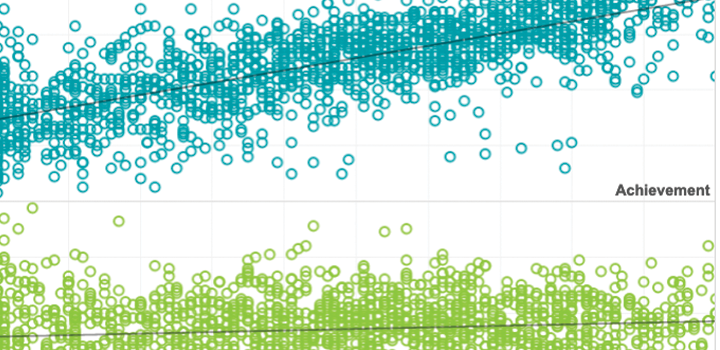Research report


Achievement and Growth Norms for Course-Specific MAP Growth Tests
This report documents the procedure used to produce the achievement and growth user norms for a series of the course-specific MAP® Growth™ subject tests, including Algebra 1, Geometry, Algebra 2, Integrated Math I, Integrated Math II, Integrated Math III, and Biology/Life Science. Among these tests, Integrated Math I, Integrated Math II, Integrated Math III, and Biology/Life Science were the first time to have their norms available. The remaining tests, i.e., Algebra 1, Geometry, and Algebra 2, had their norms updated including receiving more between-term growth norms by using more recent test events. Procedure for norm sample selection and a model-based approach using the multivariate true score model (Thum & He, 2019) that factors out known imprecision of scores to generate the norms are also provided in detail, along with the snapshots of the achievement and growth norms for each test.
By: Wei He
Products: MAP Growth
Topics: Measurement & scaling


Achievement and growth norms for English MAP Reading Fluency Foundational Skills
This report documents the norming study procedure used to produce the achievement and growth user norms for English MAP Reading Fluency Foundational Skills.
By: Wei He
Products: MAP Reading Fluency
Topics: Measurement & scaling


Looking beyond vision: Supports for students who are blind or visually impaired in mathematics
This review examines research on math achievement in students who are blind or visually impaired, the opportunities that BVIs have to demonstrate their knowledge of mathematics, as well unique challenges they face and ways in which these barriers have (or have not) been addressed.
By: Sonja Steinbach
Topics: Accessibility, Equity, Math & STEM


MAP Growth item parameter drift study
This report documents the results of an item parameter drift study designed to check the parameter stability of MAP Growth items.
By: Wei He
Products: MAP Growth
Topics: Computer adaptive testing


School officials regularly use school-aggregate test scores to monitor school performance and make policy decisions. In this report, RAND researchers investigate one specific issue that may contaminate utilization of COVID-19–era school-aggregate scores and result in faulty comparisons with historical and other proximal aggregate scores: changes in school composition over time. To investigate this issue, they examine data from NWEA’s MAP Growth assessments, interim assessments used by states and districts during the 2020–2021 school year.
By: Jonathan Schweig, Megan Kuhfeld, Andrew McEachin, Melissa Diliberti, Louis Mariano
Topics: Measurement & scaling, COVID-19 & schools


An investigation of item parameter invariance using focused calibration samples for MAP Growth
Two studies were conducted to evaluate whether the existing MAP Growth item parameter estimates are invariant across different calibration samples.
By: Wei He
Products: MAP Growth
Topics: Computer adaptive testing


Does four equal five? Implementation and outcomes of the four-day school week
The four-day school week (4dsw) is growing in popularity, especially in rural areas across the western United States. RAND researchers conducted a study of the implementation and outcomes of the 4dsw in numerous districts across Idaho, New Mexico, and Oklahoma, as well as administrative data from these and other states. The analyses resulted in mixed findings, with small cost savings and high satisfaction for teachers, families, and students, but lower test scores related to the 4dsw. Given these mixed findings, communities are likely to make different choices about the 4dsw depending on their goals and the local context.
By: M. Rebecca Kilburn, Andrea Phillips, Celia Gomez, Louis Mariano, Christopher Doss, Wendy Troxel, Emily Morton, Kevin Estes
Topics: Informing instruction


